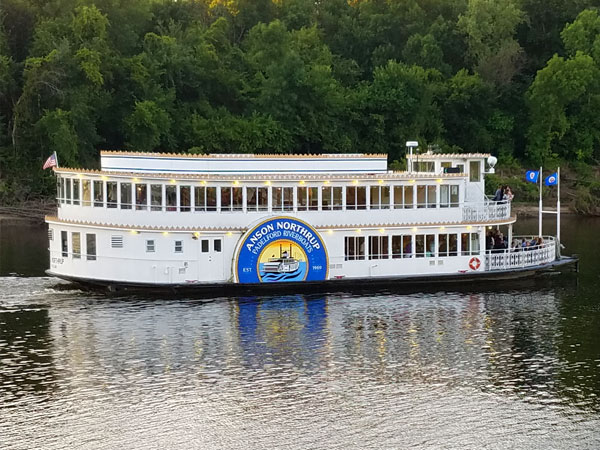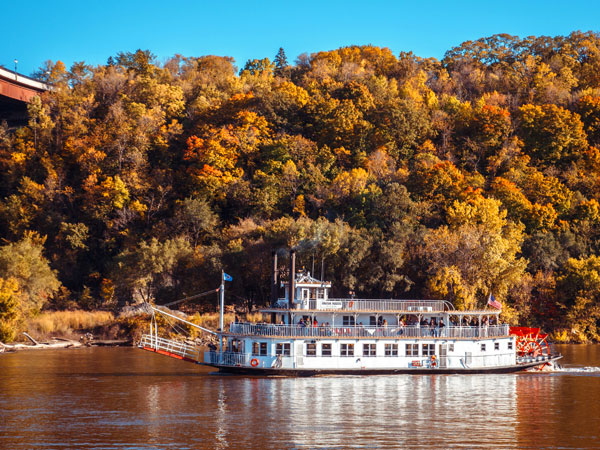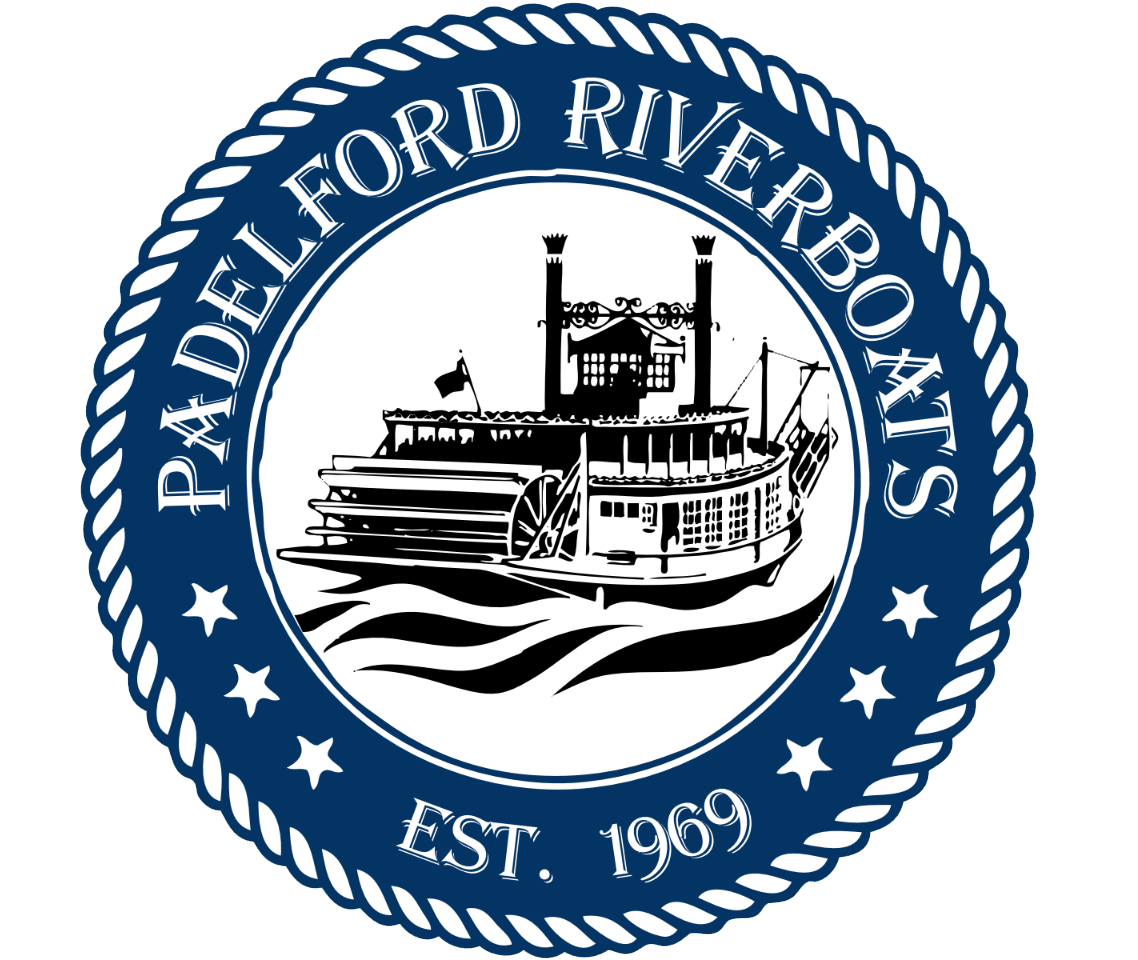Mississippi River History
St. Paul and Minneapolis exist today because of riverboats. In fact, virtually every city along the major rivers of the United States can trace its very existence to the arrival of riverboats in America. In the early 1800s, the Minnesota Territory was inhabited by Native Americans, soldiers, trappers, traders, explorers, and lumbermen. The cities, if you could call them that, were little more than camps where these rugged individuals congregated to drink, play cards, fight, and rest.
Native Americans hunted and farmed in the Mississippi valley for hundreds of years before white men arrived. The first European settlement in the Twin Cities area was Fort Snelling. In 1805, President Thomas Jefferson sent a young army Lieutenant, Zebulon Pike, into the area to find a suitable site to build a military outpost. Two years earlier, President Jefferson had purchased the entire central portion of the country from the Canadian border to the Gulf of Mexico from Napoleon Bonaparte of France. That land agreement was called the Louisiana Purchase. President Jefferson wanted an army post in Minnesota to protect the country’s new land from the British and to keep the peace between warring Indian nations—the Dakota and Ojibway.
Arriving at the confluence of the Minnesota and Mississippi Rivers in the summer of 1805, Lt. Pike met French-Canadian Fur Trader Jean Baptiste Faribault repairing his canoe at the lower end of the island. After exploring the area, Pike determined that the bluffs overlooking the island between the two rivers would be an excellent location for the fort. That island eventually was named Pike Island, in his honor.

Fourteen years later, the first contingent of soldiers, led by Col. Henry Leavenworth, arrived to begin construction of the fort, originally called Fort St. Anthony. They endured extreme hardships in the first year, and nearly 40 men died over the winter. A new commander, Col. Josiah Snelling, took charge in 1820 and over the next four years, he supervised construction. Upon completion of the new military complex, Gen. Winfield Scott came from Washington D.C. to inspect the fort. He was so impressed with what Snelling and his men had accomplished in the wilderness that he recommended to Congress that they rename the facility Fort Snelling.

In the 1830s, a rugged frontiersman came to the Minnesota Territory. Known as Pig’s Eye Parrant because of a battered face he had acquired as a result of too many barroom brawls, the bawdy newcomer discovered a cave on the north bank of the Mississippi River about four miles downriver from Fort Snelling. In the cave was a marvelous, spring-fed stream; thus, given the name Fountain Cave. Ole Pig’s Eye, who brewed liquor, decided that Fountain Cave was a perfect place for his home and business. He quickly found many customers at Fort Snelling.
Over the years, a number of civilians had migrated down from Canada and settled on the government land surrounding Fort Snelling. By 1838, the new commandant became concerned with the growing civilian population at the Fort. He told them to leave Fort property, and when they refused, he ordered his troops into their settlement. The soldiers forced the civilians out of the area and burned their homes. There was no other white settlement for hundreds of miles, so 150 families wandered down the river until they came to Pig’s Eye Cave. Fresh water, unlimited hunting and fishing, and a ready supply of lumber made the cave a perfect place to live. The people formed a new community, and they called it Pig’s Eye.
Three years later, in 1841, a Catholic priest named Father Lucien Galtier arrived and built a small log chapel about a mile downstream (near the present site of the Robert Street Bridge). Every Sunday, the people of the Pig’s Eye community traveled down river to Father Galtier’s chapel. Soon, they became dissatisfied with the name of the community and decided to change it to the name of that little chapel. It was the Chapel of Saint Paul. That is how the city of St. Paul began at Fountain Cave, which was located approximately where the ADM Grain Terminal is today along Shepherd Road, just upriver from the downtown area.

Over the next few years, the tiny community grew slowly until the big riverboats suddenly began to venture north on the Mississippi River. Please remember, there were no cars, trucks, trains, or airplanes. Travel was done through the woods by walking, riding a horse, in a wagon pulled by horse/oxen, or by boat. Rivers were the “freeways” of the 1800s. Travel was faster and much more comfortable on the big riverboats than by any other means. By the 1850s, hundreds of riverboats were coming to St. Paul bringing all types of goods and thousands of people. The entire Minnesota Territory had a non-Indian population of about 6,000 people in 1850. By the early 1860s, the population had exploded to 200,000. Almost all of those new residents arrived by riverboat.
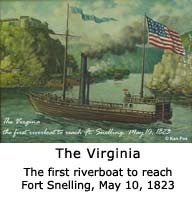

Riverboat traffic began modestly in 1847 with 47 vessels arriving in Saint Paul—including the riverboat Lynx with a 23-year-old school teacher named Harriet Bishop. Riverboat arrivals increased each year, attaining peaks of 1,027 in 1857 and 1,068 in 1858 (the year Minnesota became a state). Severe national economic depression struck in 1859, slashing riverboat arrivals to 808. Arrivals held relatively steady into the 1860s, when the Civil War dominated national attention. During the war, many riverboats transported military troops and supplies throughout the Mississippi and Ohio Rivers. Some were even converted to early battleships using bales of cotton stacked high around their perimeters to defend against hostile gunfire. As the war ended, steel rails were being laid across the country, and riverboat landings in St. Paul plummeted almost to extinction.
You can see that riverboats truly did play a vital role in the creation of St. Paul. However, as marvelous as these big boats were, they posed many serious threats. In those early days, riverboats were powered by giant steam engines. Steam engines used wood that was in abundant supply along the river shores for fuel. Unfortunately, steam engines were under tremendous pressure, and the boilers frequently exploded, destroying the riverboat and killing many passengers and crew. Another danger was fire that could be started by hot sparks, which billowed out of the riverboat’s smokestacks. If the riverboat somehow managed to avoid fire and explosion, they also faced peril from rocks and snags (dead trees) under the water that could puncture the wooden hull and sink the boat.

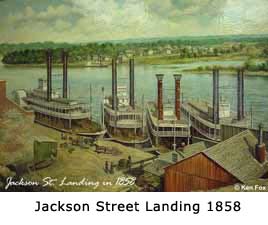
Traveling the river was a very dangerous experience but one that many people made in the hope of reaching this new land of lush woods and abundant wildlife. Just to prove that human beings are not totally without hope, we did learn from those early mistakes. Today, riverboat travel is extremely safe due to the upgrades that have been made in vessel construction, course plotting, river maintenance, and crew training.
* All historic paintings are from the private collection of Capt. William D. Bowell, Sr., founder of the Padelford Packet Boat Co., Inc. The paintings were done by Padelford employee Ken Fox.
Gift Certificates, Season Passes & Promotions
Gift Certificates
Buy Online, Redeem Online
Special Offers
Family Season Passes
Sign Up for Our Newsletter!
